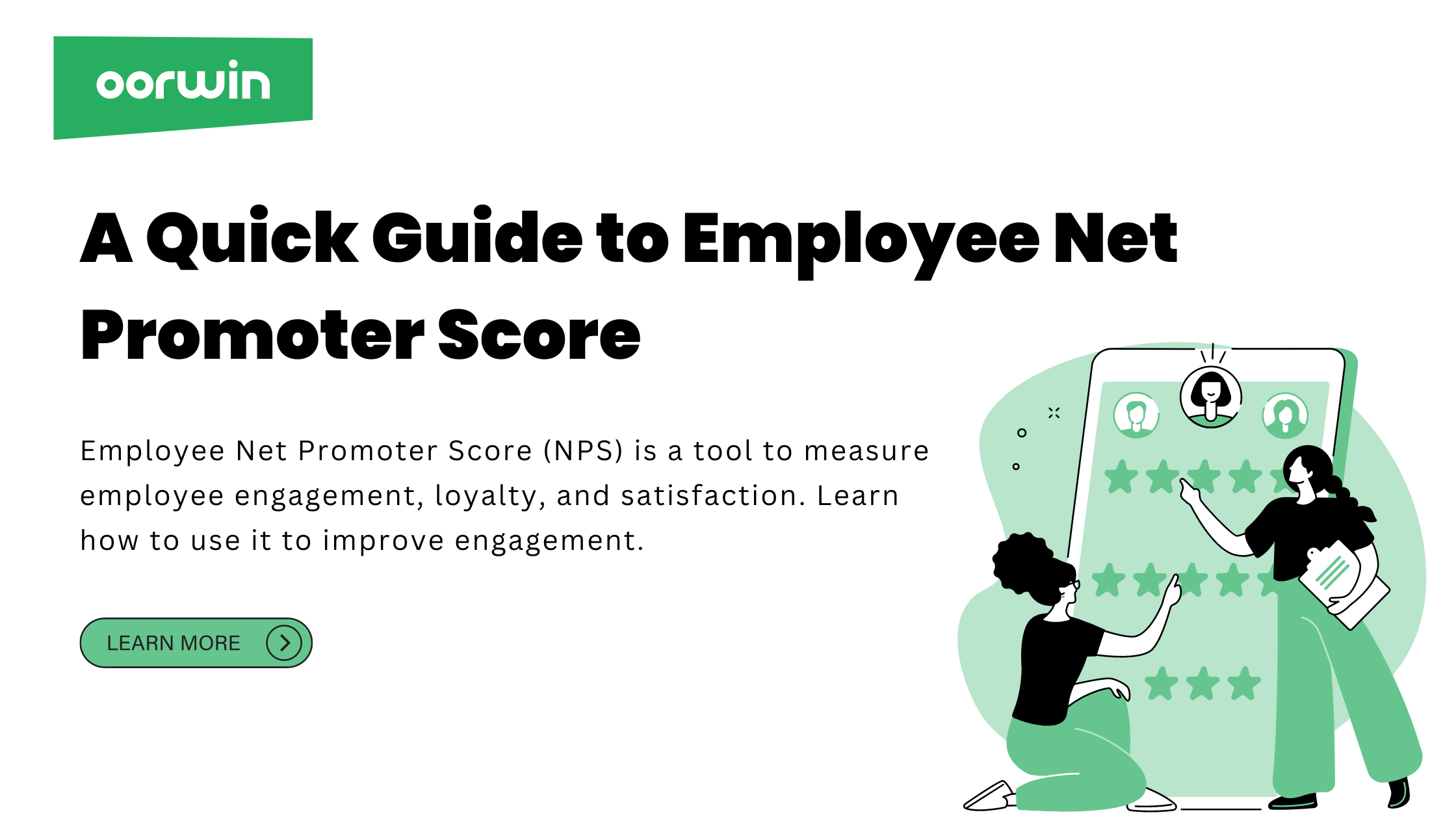What is Employee Net Promoter Score (eNPS)?
Employee Net Promoter Score (eNPS) is a metric used to measure employee engagement, satisfaction, and loyalty in the workplace. It is based on a simple survey question, asking employees how likely they are to recommend their company as a workplace to a friend or colleague. The resulting score gives a snapshot of the company’s overall employee engagement and satisfaction.
Employee NPS Survey Questions
The survey questions are usually simple. The most common question is, “How likely are you to recommend the company to your friends and colleagues on a scale of 0 to 10?”. The responses are then categorized into three groups – Promoters (9 or 10), Passives (7 or 8), and Detractors (0 to 6).
How to Calculate Your NPS Score
The NPS score is calculated by subtracting the percentage of detractors from the percentage of promoters. For example, if 70% of employees are promoters, 20% are passives, and 10% are detractors, the eNPS score would be 60 (70-10).
Promoters
Promoters are employees who would highly recommend the company to their friends and colleagues. These employees are engaged, satisfied, and loyal to the company.
Passives
Passives are employees who are neutral about the company and would not actively recommend it. These employees may need more time to be fully engaged or satisfied with their job, and companies must improve their engagement levels.
Detractors
Detractors are employees who would not recommend the company to their friends and colleagues. These employees may have negative opinions about the company and may be unhappy with their job.
What is a Good Employee Net Promoter Score
A good eNPS score is one that is above 0, indicating that there are more Promoters than Detractors in the organization. However, a score above 50 is considered excellent and indicates a high level of engagement and satisfaction among employees.
What are the benefits of eNPS
There are many benefits to using eNPS, including the following:
- Improved Employee Engagement and Satisfaction: eNPS provides insight into the level of employee engagement and satisfaction, which can help organizations identify areas for improvement.
- Better Retention Rates: Happy and engaged employees are more likely to stay with the company, which can result in lower turnover and better retention rates.
- Increased Productivity: Satisfied employees are more productive and motivated to perform at their best.
- Improved Workplace Culture: eNPS provides valuable feedback on workplace culture, which can help organizations create a positive and inclusive environment for employees.
How to use eNPS effectively
To get the most out of eNPS, it’s important to use the results effectively. Here are some tips for using eNPS effectively:
- Make it a regular practice: Make eNPS a regular part of your company’s employee engagement strategy by conducting surveys at least once or twice a year. Regular eNPS surveys help you track progress, identify areas that need improvement, and measure the impact of your engagement initiatives.
- Communicate the results: Communicate the results of the eNPS surveys to your employees, and share what the company plans to do based on the feedback received. This shows your employees that you value their opinions and care about their engagement and satisfaction.
- Take action: Use the eNPS results to identify areas that need improvement and take action to address them. For example, if a large percentage of employees are dissatisfied with the company’s work-life balance policies, consider revising them.
- Track progress: Track the progress of your eNPS score over time and use it to measure the impact of your engagement initiatives. This will help you determine what is working and what needs to be improved.
- Involve employees: Involve your employees in the eNPS process by asking for their input and feedback on how to improve the company’s engagement and satisfaction. This will show them that their opinions and suggestions are valued and help to create a culture of open communication and collaboration.
Frequently Asked Questions
What are the benefits of using Employee Net Promoter Score?
The benefits of using eNPS include improved employee engagement, reduced employee turnover, increased productivity, and insights into the employees’ perspective.
What is an NPS benchmark?
An NPS benchmark is a score used as a comparison to measure the performance of a company’s eNPS. The benchmark varies from industry to industry, but a score above 50 is typically considered good.
How to use NPS survey results for improvement?
To use NPS results, identify areas for improvement and implement changes to improve employee engagement, satisfaction, and loyalty. Continuously monitor the results to ensure ongoing improvement.
Popular Articles..
Blog
Blog
Blog
Get the latest Oorwin releases, updates, success stories & industry news
 Back
Back


